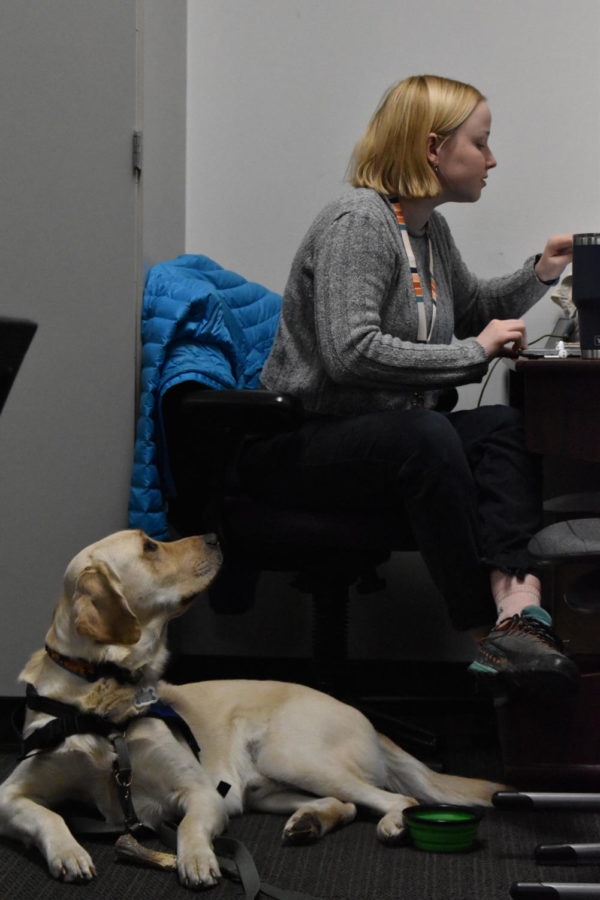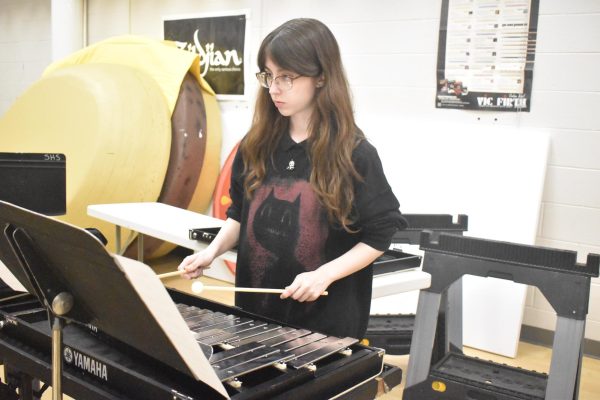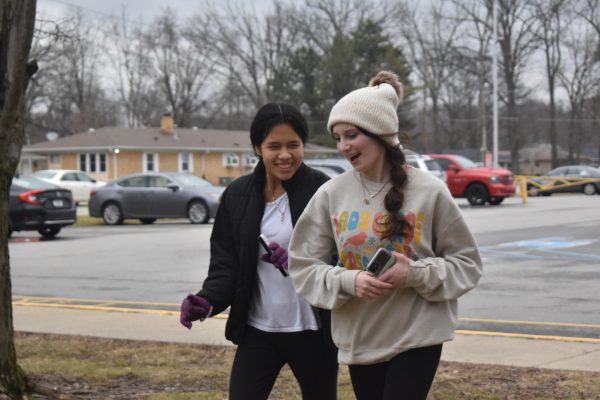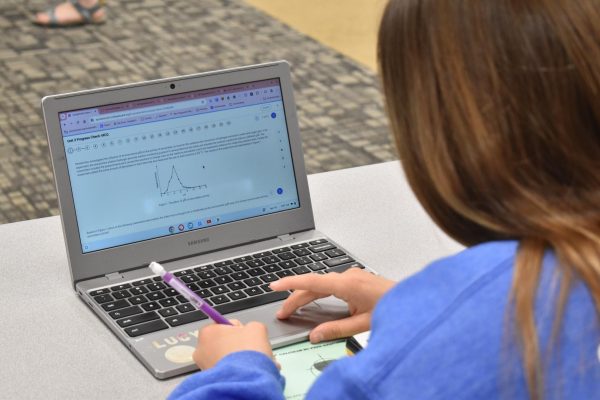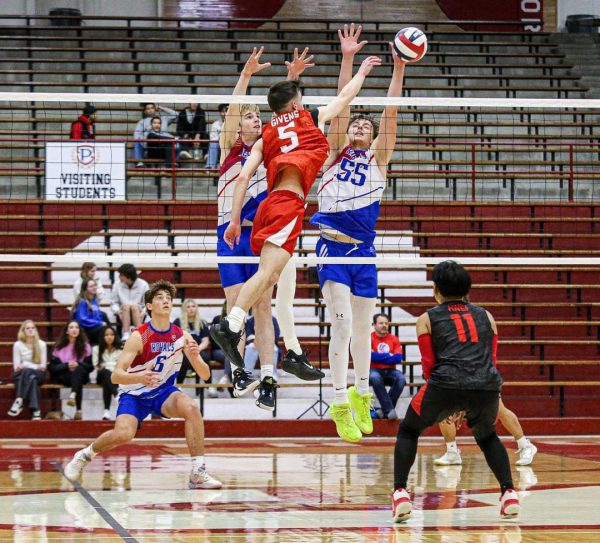A ‘paw’-sitive balance
New student teacher trains service dogs while managing other hobbies
Student teacher Olivia Brown works at her desk while Ziggy looks up at her attentively on Jan. 31. He sat by her side as a part of his training.
Student teacher Olivia Brown’s interest was piqued when her IUPUI professor brought a service dog-in-training to class. After asking about it, Brown learned it was possible for her to get involved too. Now, Brown has trained multiple dogs and is immersing them in the SHS environment.
“I’d always been interested in training dogs, and I have a pet dog myself that I trained,” Brown said.
While also balancing teaching, a job and school, Brown devotes her time to training service dogs.
Last August, Brown began volunteering with the Indiana Canine Assistant Network, also known as ICAN. They are an organization that allows inmates from three prisons around the state to train service dogs. The dogs stay with an inmate, their handler, for about a year and a half while they are trained to act as a service dog.
After their experience in the prison, the dogs go to a volunteer. During this time, the dogs are exposed to situations that they wouldn’t encounter otherwise.
“As you can imagine, (inside a prison) there aren’t a lot of kids, or distractions or cars, things like that that they need to know how (the dogs will) react,” Brown said.
The volunteers have full responsibility of the dogs for a three to four week period. Because of this, training is required, and applicants must be approved for the program.
Like all volunteers, Brown was not handed a dog right away after signing up. She had to take a two-month course, mostly online with only a few in-person sessions, on training service dogs. After she completed the course, she was given her first dog, a yellow lab named Scout.
While volunteers typically have a dog for about three weeks, it may depend on the dog. Scout, for example, was with Brown for about a month because of the handler’s movement from one prison to another. Harper, the dog Brown brought with her to SHS, was kept for five weeks because she had just gotten spayed and was going to a client soon.
“So sometimes if there are special circumstances, (the period you have a dog) will be longer, but typically it’s around three weeks,” Brown said.
For however long the dogs’ stay with her might be, Brown takes her responsibilities seriously. The dogs stay at her home, attend her student teaching job with her and go out with her in public.
As far as experience goes, Brown believes her job at SHS is beneficial to each dog. The school environment allows the dogs to gain familiarity with many different situations. For dogs that are good with kids, like Brown’s current dog Ziggy, this social environment allows him to interact with others and gain lots of practice with focusing on his duties.
“It’s definitely good for him to get practice staying focused for long periods of time,” Brown said.
During the school day, Brown keeps her dog lying close to her desk. If a student especially likes the dog, the dog is allowed to sit with them during class. This is beneficial for some students, Brown says, who are motivated to do work by the promise of getting to pet a dog.
According to Brown, Ziggy doesn’t get distracted easily. This means that even when he sits with a student, he can focus most of the day and not cause disruptions in class.
Science teacher Daryl Traylor, who has Brown as her student teacher, also believes that having Ziggy in the classroom is not a disturbance. Unless the room is silent, Ziggy mostly cannot be heard.
“He usually stays wherever she’s at, or if she’s walking around the room teaching, he stays up by the desk,” Traylor said. “He’s very well behaved.”
While Brown loves what she does, it takes lots of dedication. Her packed schedule, which includes student teaching, giving rock climbing lessons three times a week and completing her own schooling, doesn’t leave much time for training a service dog, but Brown makes it work.
Despite a busy schedule, Brown intends to continue with the program. While she enjoys what she is doing now, her ultimate goal is to be the main handler for a facility dog. This means that she would keep a dog as long as it may live or work, and it would come to school with her every day.
Whether she’s teaching a kid or coaching a dog, Brown will continue to keep the balance and commit herself to whatever she may be doing.
“Every now and then, (Ziggy) will start to wander off, like while (Brown) is giving notes, and she whistles at him real quick and then gets right back,” Traylor said. “It’s no different than a chatty kid, (and) she handles both very well so far.”

Hi! I’m Ava, and I’m the Sports Editor for The Journal. Last year, I was a feature writer. While I definitely enjoyed my time there, I’m excited...


